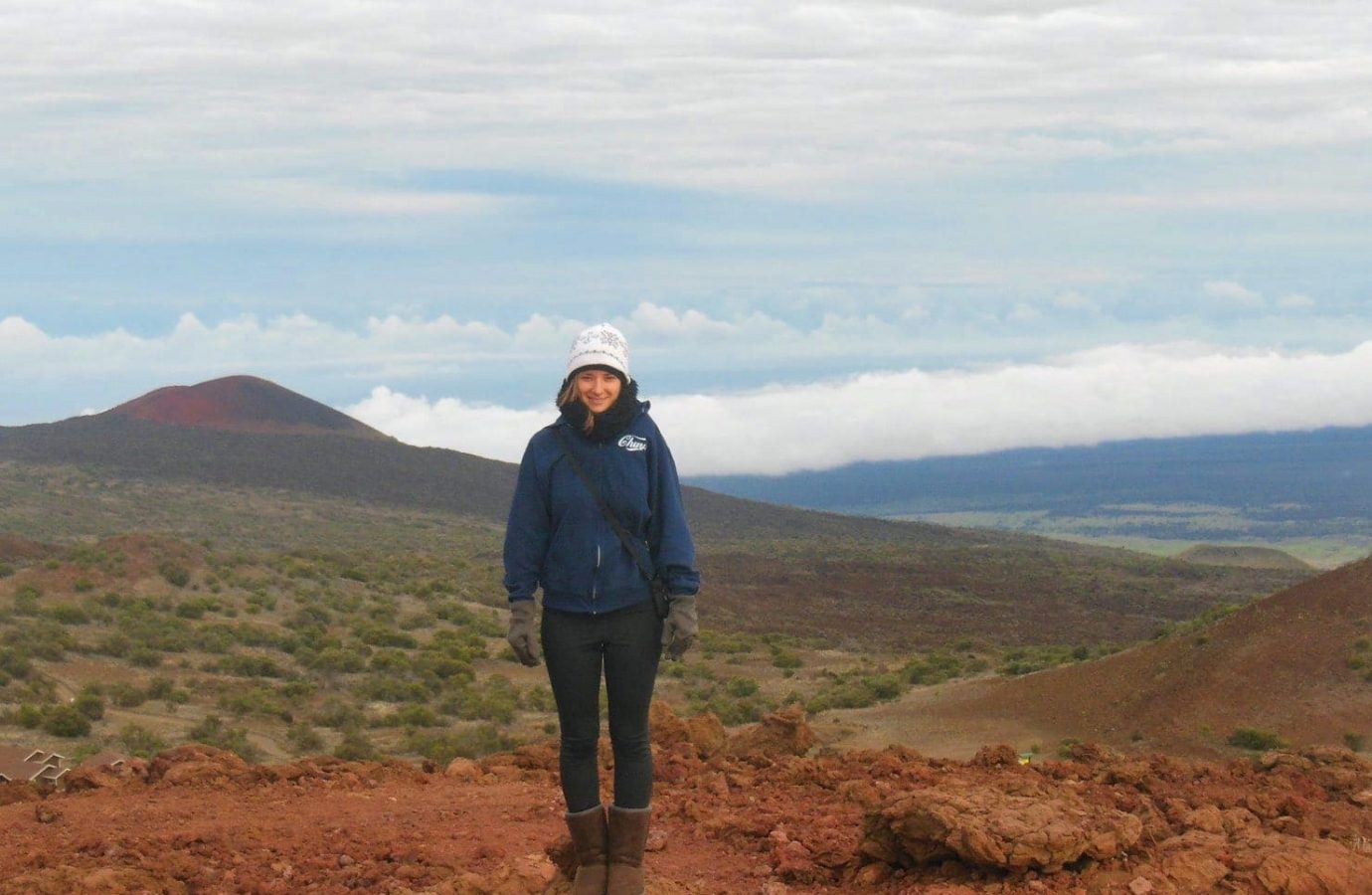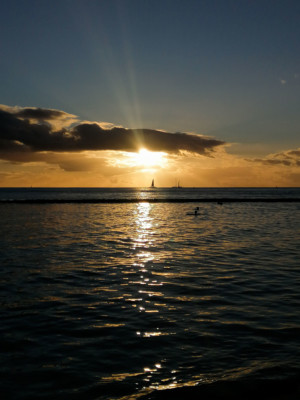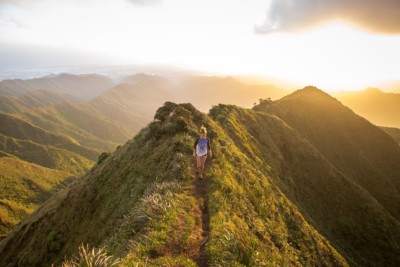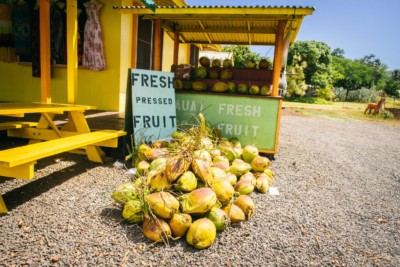Hey there 😊
How lovely that you are here!
Have you packed your suitcase for Hawai'i yet? Did you remember to pack something warm?
If you're thinking: "Eeeehm, did she get something wrong? The article is about Hawai'i and it is always good weather there!", then this article is especially for you! So be sure to read on!
And if you were wondering what the best time for a vacation to Hawai'i is, that question will also be answered in this blog article.
If you thought that only summer, sun, sunshine and bright blue, cloudless skies await you in Hawai'i, then I have to disappoint you...
The climate in Hawaii is incredibly diverse.
Depending on which island you are on, depending on whether you are in the west or east of that island, at sea level or in the mountains, the climate changes everywhere.
It is either tropically warm, humid, dry, cold or windy - and sometimes there's even snow.
Before we go continue however, we should clarify a fundamental question:
What exactly does "climate" mean and how is it different from weather?
The term climate is basically used to describe the meteorological situation that results from the geographical location of a particular place. This includes the latitude (in other words, the position between the equator and the north/south pole), the altitude above sea level, the relief and the winds (e.g. the trade winds). The climate therefore represents a long-term trend of a (very) large region, which changes only slightly.[1]
Weather, on the other hand, is local and can vary greatly from day to day. It describes the daily changes in the meteorological conditions of a place and is short-term.[2]
The climate in Hawai'i
In Hawai'i, the climate is generally tropical. This means that it is warmer than 18°C on average every month. The humidity is high except for the peaks on Maui and the Big Island.
The average temperature in Hawai'i is about 24°C. Temperatures do not differ much at night and during the day because Hawai'i is relatively close to the equator (about 19° north latitude). By the way, this is why the sun rises and falls relatively quickly.
The special thing is that there are many microclimate zones. These are local areas where the climate differs from the general tropical climate of the island. This is the case in the lava deserts and the drier areas on the west side of the islands for example.
Due to the northeast trade winds, the eastern sides of the islands are generally windier, rainier and therefore wetter which is why the rainforests and jungles are often found here.
Furthermore, the peaks of Mauna Loa and Mauna Kea on Big Island and Haleakalā on Maui have ice climates. Yes, you read that right - ice climate!
Therefore, it is advisable to also take a scarf, a beany, pants and a cosy hoodie to the islands! After all, it can get quite cold up there, up to 0°C in the coldest months (February, December).
Hawai'i has only two seasons: Summer and Winter. It is warmer in summer from May to September (21°C at night - 32°C during the day, there are exceptions of course) and drier. In winter (October to April) it is cooler (18°C at night 26°C during the day, there are exceptions of course) and it rains much more.
The water temperature is also very pleasant: it is 24°C in winter and 27°C in summer.
The fact that it rains a lot in Hawai'i is not a curse. Without the rain, there would be no diverse, lush nature in Hawai'i - and there would be no incredibly beautiful waterfalls. "No rainbow without the rain." This or something similar was the saying I read on a t-shirt sold in a souvenir store at the time. I find this saying not only climatically appropriate but it also speaks for the whole Hawaiian mentality. The love for the country, the positive way of thinking.
In Germany, we often blame the rain for our mood, get annoyed when it rains and wish it would stop as soon as possible.
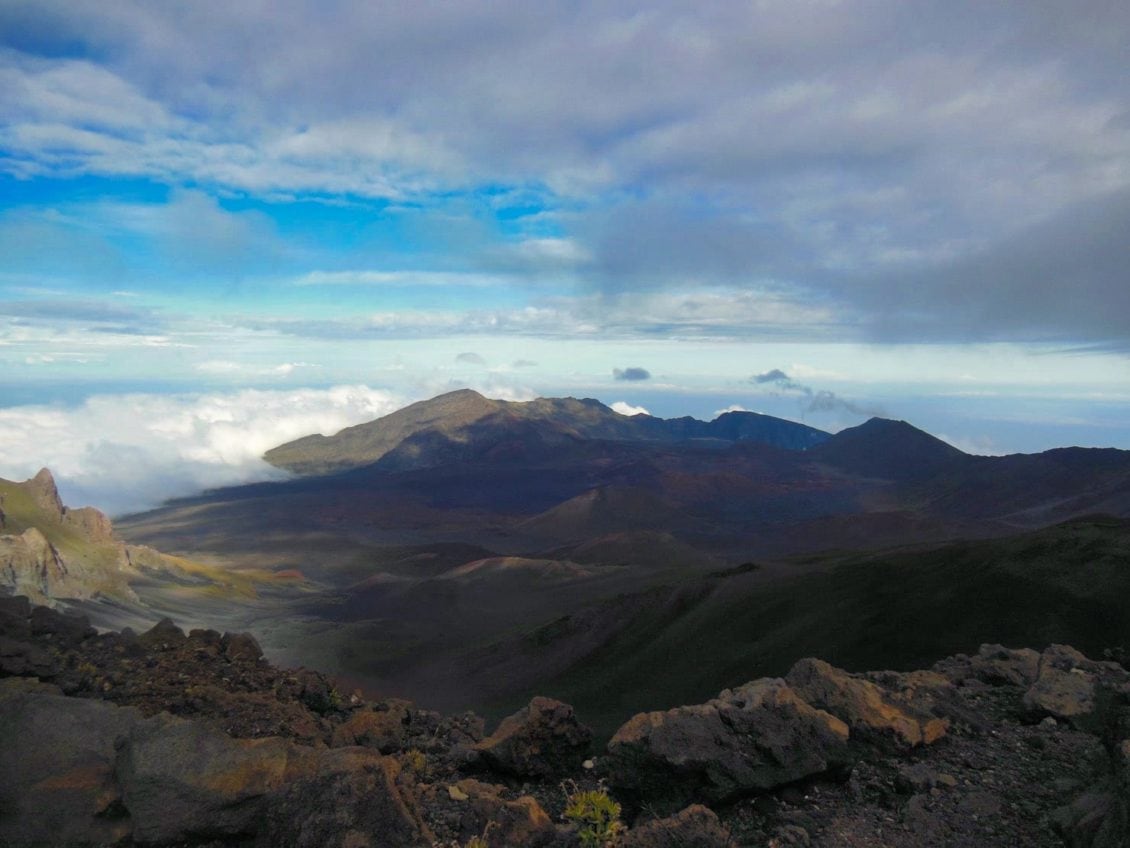
Very few people consider that rain is incredibly important for us. The rain gives us life. Plants need water to live. Animals need water to live. We need water to live.
Hawai'i can teach you to love the rain. And perhaps climate change will also help us perceive the rain as a blessing rather than a curse.
Unfortunately, however, Hawai'i also experiences natural disasters related to rain. For example, there were severe thunderstorms in April 2018 on Kaua'i and O'ahu. On Kaua'i at that time, 1,262mm (=1,262 l/m²) of rain fell in 24 hours, causing landslides, floods and power outages.
Hawai'i has also not been spared from hurricanes and tsunamis. Hurricane season is from June to November. In the past, Hawai'i has been hit hard by Iwa (1982), Iniki (1992), and Lane (2018). However, that doesn't mean that you shouldn't take your vacation at this time!
Hurricanes hit Hawai'i rarely very hard. If in doubt, check the Hawai'i Department of Health website, here for example. http://health.hawaii.gov/prepare/advisories/hurricane-season/#situation.
Conclusion
The climate in Hawai'i varies greatly depending on where you are. At the beach and on the coasts it is tropically warm, the higher up you go the cooler it gets. The tops of the mountains are usually very cold. So if you're planning a trip to Mauna Loa, Mauna Kea or Haleakalā, it pays off to have warm clothes in your luggage. You have to say goodbye to the idea of a cloudless, azure sky. The rain that the clouds bring is simply part of it. Without it, there would be no jungles, no delicious fruits, no rainbows and no waterfalls.
Be kind and love nature,
Daniela
Evidence
[1] [2] https://www.umweltbundesamt.de/service/uba-fragen/was-ist-eigentlich-klima
Photos (c) Daniela Dägele


